I should have loved biology too
How I went from hating it to being obsessed, the allure of great writing, and a post-scuba-dive moment of clarity
About a year ago, I came across James Somers’ blog post, I should have loved biology. I began reading it and every sentence struck a chord: “I should have loved biology but found it a lifeless recitation of names”; “In textbooks, astonishing facts were presented without astonishment”; “In biology class, biology wasn’t presented as a quest for the secrets of life. The textbooks wrung out the questing.” In fact, the chord was so neatly stuck that I stopped reading about a quarter of the way through, and found myself falling into a memory. I was sitting in my 7th grade biology class, completely disinterested. Every time our teacher would turn her back to us to write on the blackboard, my friends and I would sling paper pellets at each other across the room, barely paying attention as she narrated wearily about cell walls or chloroplasts or mitochondria being the powerhouse of the cell. I liked math and physics and economics and even chemistry, to some extent (much less pellet slinging), but biology, with its endless memorization of definitions and regurgitation of facts – no, biology could go back under the soil it came from.
Now, I’m obsessed. I can’t get enough. I’ve read about fifteen books in the last year or so, watched countless YouTube videos, and started a bioinformatics course. And my list keeps growing. The first quarter of Somers’ post was so effective in making me consider my own disinterest-to-obsession journey – (I didn’t even read the rest until months later) – that I decided to look back and examine what caused this complete change of heart.
More than anything – nature documentaries, science shows, museum visits – it was great writing that allowed me to see the world of biology differently. My interest in biology, or rather the reversal of my disinterest in biology, began when I read The Sixth Extinction in 2016, during my second year of university. Elizabeth Kolbert’s gripping writing unveiled a completely different perspective of the subject, right alongside the scientists and researchers: driving through a Panamanian rainforest looking for golden frogs, searching a littered New Jersey creek for ammonites, scuba-diving in Castello Aragonese to inspect carbon dioxide rushing out of sea vents and in The Great Barrier Reef to look at octopi and coral reefs and blue starfish and leopard sharks and giant clams. Biology, suddenly, didn’t seem just a list of facts to memorize; it was an adventure.
I still remember how I felt after finishing her book: a strange mix of wonder and tragedy, awe and despair. That narrative structure – vivid reporting and meticulous research built on a foundation of context and history – changed how I saw science and scientists. No more dry paragraphs of definitions and explanations; every discovery had a story.

I wanted more books just like that, and luckily for me, several months later in an airport bookshop in Bangalore, I came across and picked up The Gene. I wasn’t aware of who Siddhartha Mukherjee was at the time (possibly the mention of Pulitzer Prize winner on the cover influenced me), and I had no prior interest in genetics, but that book would end up completely changing my worldview on biology and non-fiction writing. If Kolbert made a crack in the dam I had built around biology, Mukherjee would go on to smash the whole thing down to pieces.
One of the stories in the book, the discovery of the gene that caused Huntington’s disease, moved me tremendously when I first read it a few years ago. It’s the perfect example of the amount of effort that goes into a scientific discovery that then ends up as a single sentence in a textbook; in this case, that Huntington’s disease is a hereditary, neurodegenerative disorder caused by a mutation in a single gene.
The story of finding that mutation would make a thrilling movie: a young woman named Nancy Wexler, devastated by the news that her mother has been diagnosed with Huntignton’s and that she and her sister would have a 50-50 chance of getting it, decides to devote her life to solving this medical mystery. Her quest takes her from nursing homes in Los Angeles to interdisciplinary scientific workshops in Boston to stilt villages surrounding Lake Maracaibo in Venezuela. Her decade-long blood and skin sample collection efforts there would create the largest family tree with Huntington’s, leading to the first genetic test for the disease, followed by locating the precise genetic mutation that caused it1.
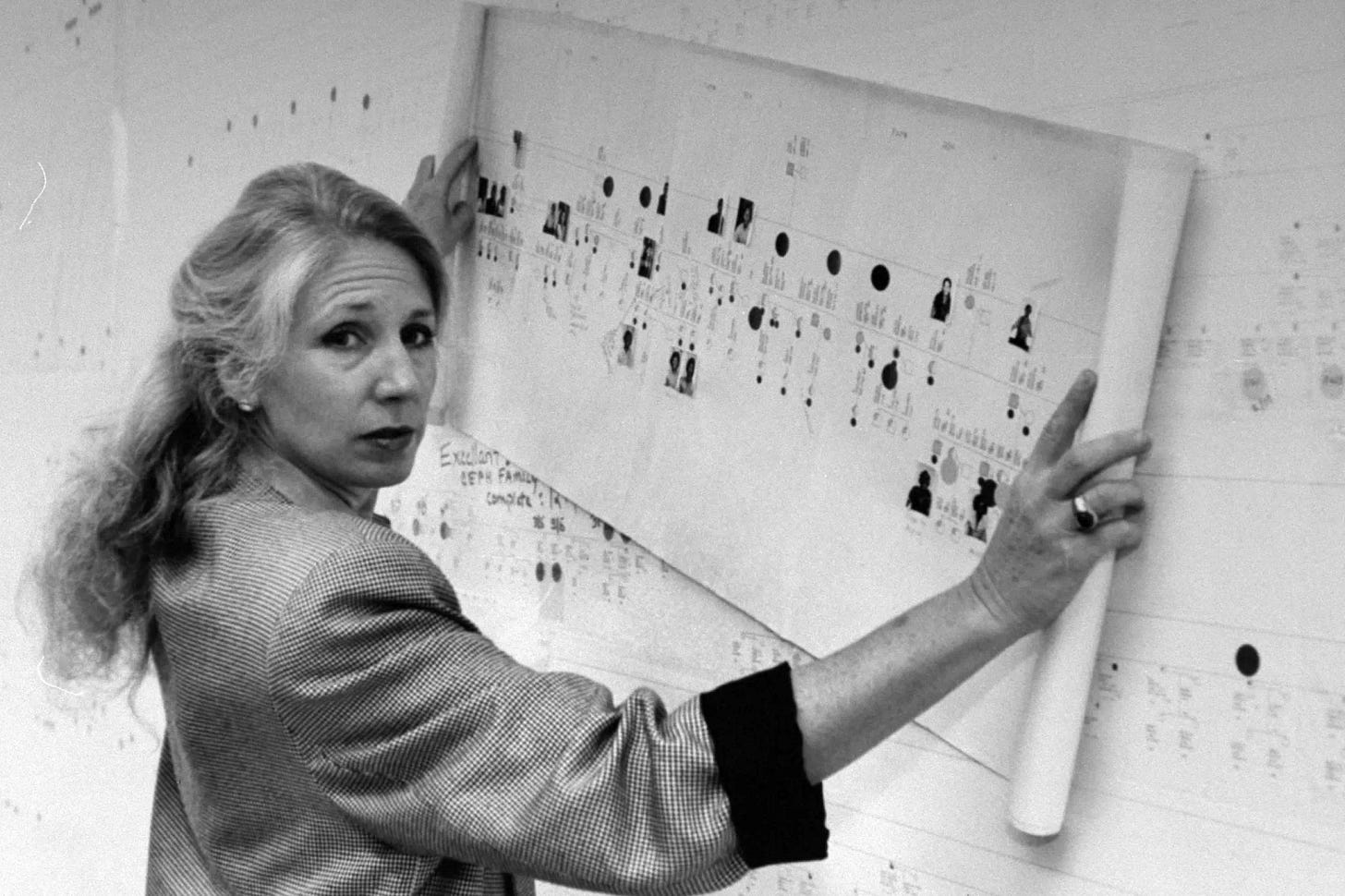
The gene sequence had a strange repeating structure, CAGCAGCAG… continuing for 17 repeats on average (ranging between 10 to 35 normally), encoding a huge protein that’s found in neurons and testicular tissue (its exact function is still not well understood). The mutation that causes HD increases the number of repeats to more than forty – a “molecular stutter” – creating a longer huntingtin protein, which is believed to form abnormally sized clumps when enzymes in neural cells cut it. The more repeats there are, the sooner the symptoms occur and the higher the severity2.
Nancy herself opted not to take the genetic test she helped create. “If the test showed I have the gene,” she wrote in 1991, “would I continue to feel the happiness, the passion, the occasional ecstasy I feel now? Is the chance of release from Huntington’s worth the risk of losing joy?”. In 2020, at the age of 74, she revealed that she had Huntington’s. The public acknowledgment was not a surprise for those close to her – for the last decade, they noticed her gait slowly deteriorate, speech slur, and limbs jerk in random directions, the same characteristics she saw in her mother half a century ago, and in the hundreds of Venezuelan patients she tended to ever since.
There’s still no cure for Huntington’s disease, but every time I hear about progress on cures, I feel a rush of emotions, like I have a personal stake in its invention. I really wish to see one found within Nancy Wexler’s lifetime; this movie deserves a happy ending.
Pick a field in biology, or a slice of history, and you’ll find countless stories just like this. Mischievous Watson and Crick figuring out the structure of DNA after getting a peek at Rosalind Franklin’s crisp x-ray crystallography photograph; Baruch Blumberg discovering hepatitis B after locating the antigen in the blood of an Australian Aboriginal, and beating NIH to its cure, the world’s first cancer vaccine; James Simpson systematically inhaling various vapors and recording its effects in the search for a better anesthetic, resulting in the discovery of chloroform; Andreas Vesalius taking prisoners’ corpses hanging in the gallows in 16th century Paris and, along with painter Andrea Mategna, publishing nearly 700 incredibly detailed drawings of the human anatomy.
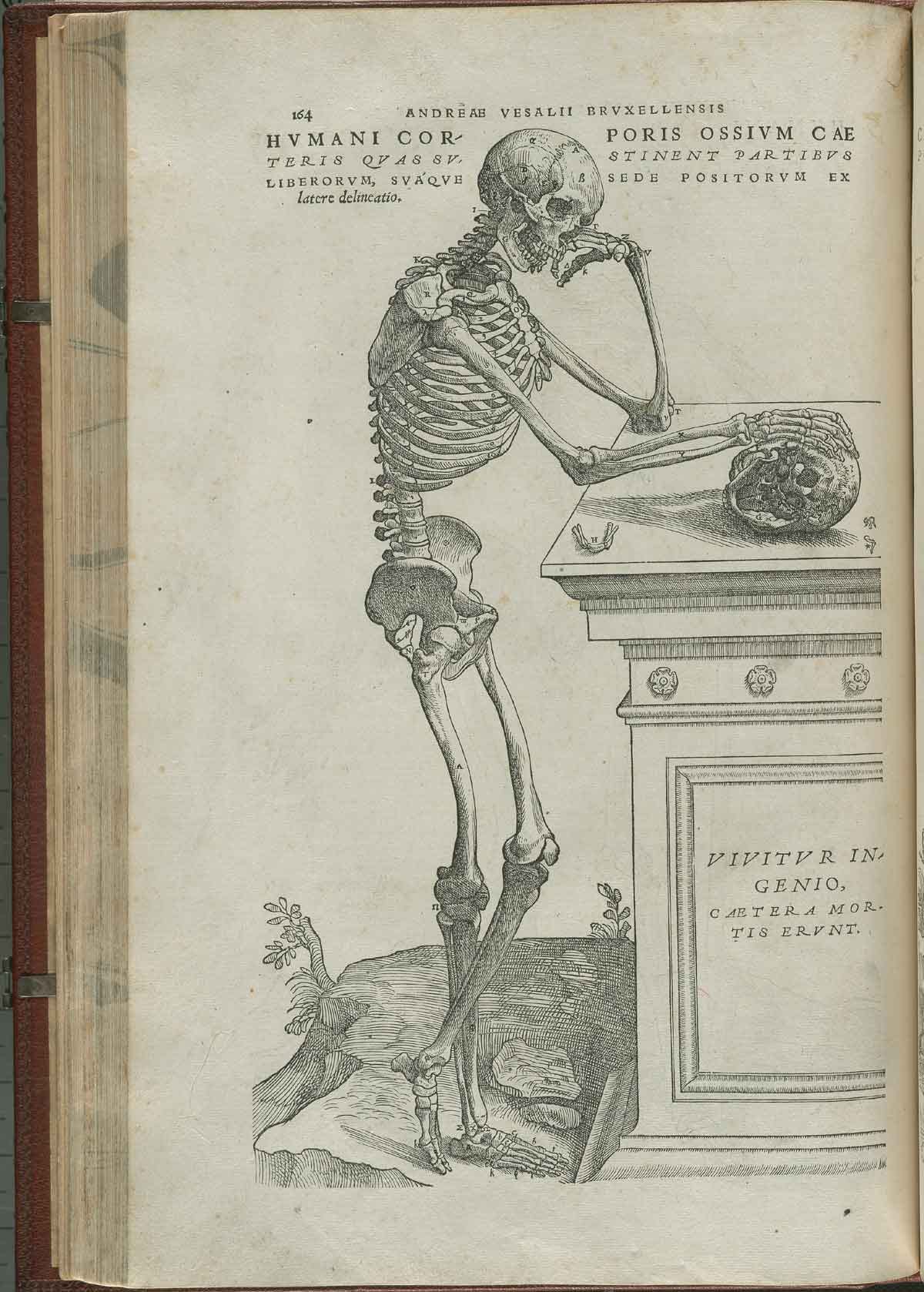
History and stories may not be immediately applicable, but when used as a key ingredient it makes the discoveries more majestic, more impactful. That’s what I love about Mukherjee’s writing: it’s a unique stew of history, biography, experimental methods and results, scientific findings and their significance, seasoned well with personal anecdotes, and presented with the candor of a physician and the artistry of a poet. The context creates a kind of multiplier when the mind-shattering discoveries are explained – how a genotype gives rise to a phenotype, how cancer works, how a heart beats or a bone mends itself or a brain remembers a memory. Like the climax of a movie scene, the beauty and immensity of the discovery or the invention feels far more compelling after following the steps that got us there.
Every discovery might not have an entertaining backstory, but even when focusing on just the phenomenon, great technical writing has this striking ability to make you see the world differently. The same molecule or cell or organ, theory or experiment or discovery, suddenly seems monumental, like it’s the most important thing in the world. It makes you think: why didn’t I learn about this before?
One of my favourites is the way Mukherjee describes how a neuron communicates in The Song of the Cell:
Imagine the nerve, first, in its “resting” state. At rest, the internal milieu of the neuron contains a high concentration of potassium ions and a minimal concentration of sodium ions. This exclusion of sodium from the neuron’s interior is critical; we might imagine these sodium ions as a throng outside the citadel, locked out of the castle’s walls and banging at the gates to get inside. Natural chemical equilibrium would drive the influx of sodium into the neuron. In its resting state, the cell actively excludes sodium from entry, using energy to drive the ions out…
[...] The dendrites are the site within the neuron where the “input” of the signal originates. When a stimulus—typically a chemical called a “neurotransmitter”—arrives at one of the dendrites, it binds to a cognate receptor on the membrane. And it is at this point that the cascade of nerve conduction begins.
The binding of the chemical to the receptor causes channels in the membrane to open. The citadel’s gates are thrown ajar, and sodium floods into the cell. As more ions swarm in, the neuron’s net charge changes: every influx of ions generates a small positive pulse. And as more and more transmitters bind, and more such channels open, the pulse increases in amplitude. A cumulative charge courses through the cell body.
The mental picture of a throng of sodium ions locked out of the castle walls is so helpful and convincing. I can see, in my mind’s eye, these shadowy ions banging at the gates to get inside, like an invading army. Then, after the neurotransmitter binds to the cognate receptor, the sodium ions don’t just enter, they flood and swarm in; the membrane doesn’t just open, its gates are thrown ajar. The metaphor makes the chemical process relatable without leaving out the details; the vivid language romanticizes it, creating a mental picture that not only stays with you, but makes you want to learn more.
A little later in the chapter, Mukherjee writes about neural connection in the fetus:
Neural connections between the eyes and the brain are formed long before birth, establishing the wiring and the circuitry that allow a child to begin visualizing the world the minute she emerges from the womb. Long before the eyelids open, during the early development of the visual system, waves of spontaneous activity ripple from the retina to the brain, like dancers practicing their moves before a performance… This fetal warm-up act—the soldering of neural connections before the eyes actually function—is crucial to the performance of the visual system. The world has to be dreamed before it is seen.
There’s something about this evocative language that leaves a sweet, lingering imprint on my mind — a new set of neural connections; my own throng of sodium ions banging at the gates, my own ripples. The details – which ions, the name of the receptor – might get murky after the passage of time, but the sweet feeling remains, like a memory of a heavenly meal; you may have forgotten the exact taste, but the feeling of satisfaction lingers, and occasionally, when it enters front and center, you might imagine visiting the restaurant (or home) once more.
That’s what I feel after reading books like this – the belief that I’ll revisit it, relive it, relearn it. It fills up a reservoir of curiosity, and every subsequent piece of stimulus – a neurology article or academic paper shared on Twitter, a documentary or YouTube video, another book (even textbooks) – opens the floodgates, and makes you want to explore a little more. I might not have the equipment to see this cell myself, but when written like this, this world too can be dreamed before it is seen.
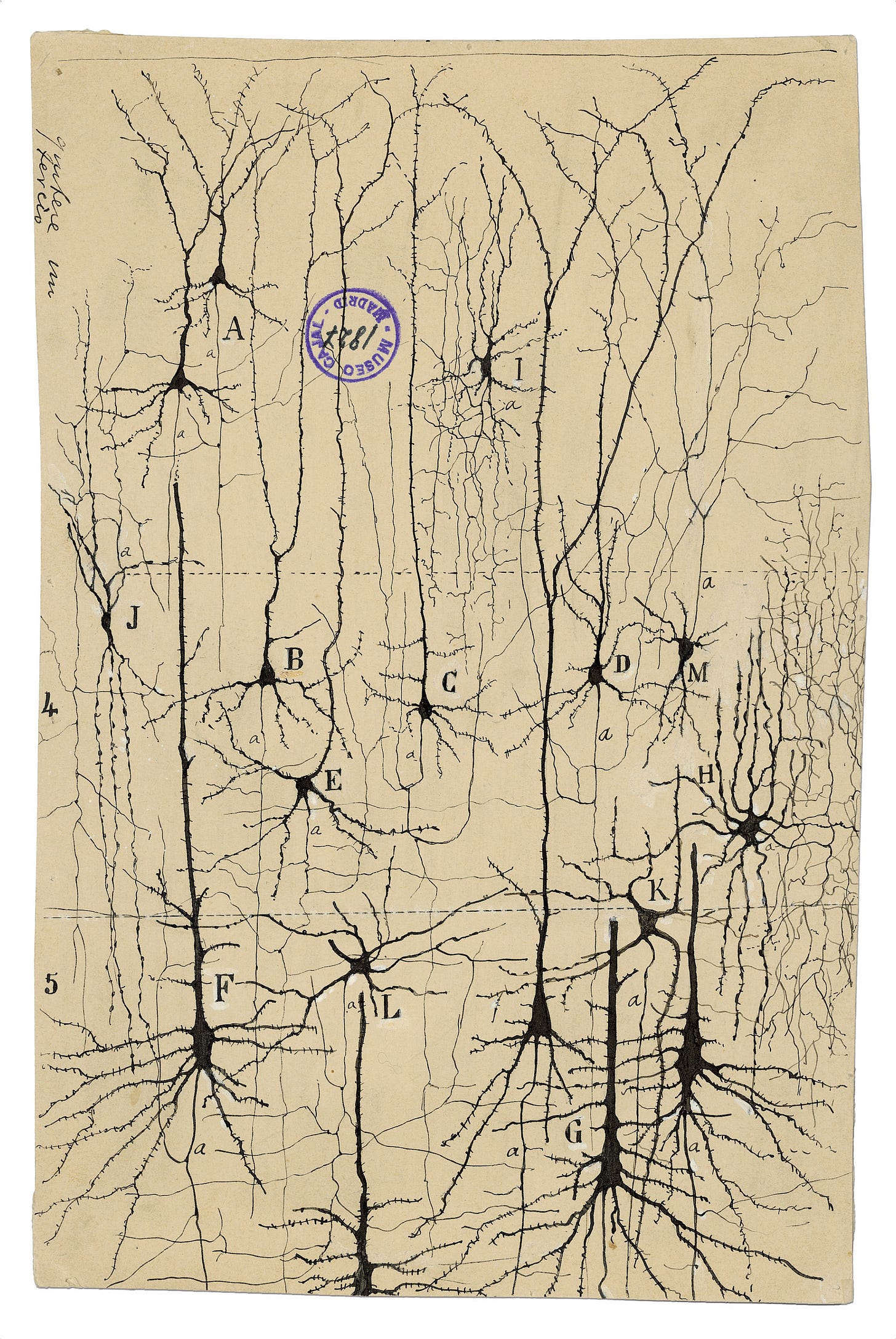
The more you explore, the more astonishing it gets. Suddenly, you’re surrounded by these facts that stop you in your tracks. Like the fact that there are 20-30 trillion red blood cells in our body, making up roughly 84% of all our cells, and 1.2 million are created in our bone marrow every second. Or the fact that our visual system is predictive, calculating where to move the hand to catch a ball before your visual system has fully registered its trajectory3.
One of my favorite ‘sentences that stopped me in my tracks’ comes from Nick Lane’s book, The Vital Question. He starts with carefully explaining that all cells derive their energy from a single type of chemical reaction, the redox reaction, where electrons are transferred from one molecule to another. Rust is a redox reaction: iron donates electrons to oxygen, being oxidized in the process. Same with fire: oxygen (O2) is reduced to water after receiving two electrons (O2-) and then two protons (H2O), balancing the charges, and releasing heat in the process. Respiration — the process that turns our food into energy — does exactly this as well, except that it conserves some of the energy in the form of a molecule called adenosine triphosphate (ATP). Think of ATP as an energy currency, able to be stored or converted back into energy by splitting the molecule into ADP (adenosine diphosphate) and Pi (phospate). And so, he writes, “in the end respiration and burning are equivalent; the slight delay in the middle is what we know as life.”
Wait, what? The slight delay in the middle is what we know as life? I think when I first read that I might have skipped a heartbeat. I learned about mitochondria and ATP and redox reactions and aerobic respiration in high school, but I never pictured it as millions of molecular fires that keep us alive. Actually, not a million; it’s at least a quadrillion – per second.
ATP is synthesized by the fabled mitochondria, but that’s not all they do. They also regulate metabolism, participate in cell growth and death, manage calcium levels, and are involved in detoxification, hormone production, and cellular signalling. They even have their own genetic code. In fact, your mitochondria come from your mother and your mother only; they’re not genetically recombined like the rest of you. They’re remarkably fascinating; even the universally memed “powerhouse” doesn’t quite cover its capabilities.
All of this is still merely scratching the surface of wonder. I’ve only really described three examples in biology, all of which relate to human cells. But we’re just one of the millions of organisms on this planet. Bacteria, plants, fungi, insects, birds, reptiles, mammals, and everything in between, are all made up of cells. And every level – ecological, species, organism, tissue, cellular, organelle, protein, genome – has its own stories, each its own magic.
In his blog post, Somers advised to learn in small, deep slices. But I took a different approach: I went shallow and wide. Kolbert, Mukherjee, and Lane inspired exploring adjacent domains, and so I read about epidemiology, drug discovery, gene editing, molecular biology, systems and synthetic biology, immunotherapy, and memoirs from surgeons, cancer patients, and “biology watchers”. Even my fiction choices started to exhibit a biology tinge: The Shell Collector, The Covenant of Water, The Overstory. Eventually, I started seeing biology everywhere — the roots of a sidewalk tree battling with concrete, a group of sparrows frolicking in a bush, a young woman in an air cast fiddling with her crutches — as if it escaped the pages and began whispering its presence wherever I went.
Last summer, I went scuba diving for the first time in my life. I’ve wanted to go since I was a teen, a desire amplified after reading Kolbert’s adventures and watching ocean documentaries. After years and years of postponing, I finally pulled the trigger and flew to Puerto Vallarta to get Open Water certified. I could fill an entire essay with just this certification experience — the anxiety-inducing pre-dive coursework that essentially just lists the many ways you can get seriously injured or die; the silly awkwardness of training in a Mexican hotel pool surrounded by curious onlookers; the ear injury I sustained after my first ocean dive, where a rupture caused by improper depressurization caused middle ear fluid to flood my right ear canal, leaving me with partial hearing loss for a week (even PADI’s intimidating coursework could only do so much) — but I will focus on just the experience of my second dive here.
It was a picture-perfect day in Puerto Vallarta: deep blue skies, fluffy cotton-candy clouds floating above, a momentary cool breeze tempering the unrelenting summer humidity. As our boat sped along to Playa Majahuitas, about a 40 minutes ride from the main pier, I watched the lush green hills roll by just behind the shore, the ocean shimmering as the sun flung silver disks across its surface. During the ride, I asked the couple sharing the boat about their scuba experiences, and, again, I got a common response I still couldn’t relate to: that it was meditative — it was where your problems of land disappear, and you get to be a visitor in the home of sea-life, a polite guest just observing.
Our dive spot looked like a painting: water so clear you could see schools of fish just by peering over the edge of the boat. Just before we began, we got a surprise visit from a manta ray – this enormous, ethereal creature silently gliding under the water, just flicking the tips of its wings above the surface, as if to say hello, and welcome us into its home.
After the dive that day, I understood what the couple meant. I felt a lot more comfortable with my equipment second time around, and so, no longer apprehensive about buoyancy or breathing rate or how deep I was, I finally felt free to fully take in my surroundings. I fell into a gentle rhythm: inhale, listen to the hiss of the regulator, exhale, watch the bubbles float away. You’re distinctly aware of each and every moment, mind blank and in awe of the world around you: a large school of Cortez wrasses passing by; a camouflaged octopus hiding under the seabed; a moray eel sticking its neck out of a little hole, an angry look on its face, as if you’ve just disturbed its sleep; the vast, splendid diversity of corals – you can see it living, with little, wavy hand-like appendages collecting bits of floating food to eat, with tiny fish swimming in and out and around, as if playing a game of tag.
It was truly marvelous. Colors, too, are more vibrant underwater, as if the gods enhanced saturation as a gift to those that dare venture below. The body of spotted boxfish are a glittery blue, and the yellow speckled top shines in contrast. The corals too are rich: deep oranges, yellows, greens and browns. Even ocean documentaries, with their film-grade color editing, don’t capture the true shades.
During the boat ride back, I had this incredibly calming bliss completely take over my body. (Maybe that’s also what people attribute to its meditative quality, although meditative isn’t exactly the right word). For me, the whole experience would mark the start of a gradual realization that I wanted my role in biology to be more than just reading. My favorite science writers – Kolbert, Mukherjee, Lane, Lewis Thomas, Donald Kirsch – all wrote from experience, and if I wanted to write, or create, like that, I’d have to experience the world too. I began piecing together the things that had been swimming in my mind: namely, how to combine my past passion, interactive learning, with my latest obsession, biology.
I have since restarted working on my website, Newt Interactive, to make interactive articles and accessible simulators for topics in biology. I too, like Somers mentions at the end of his blog post, want to bring the three dimensional nature of biology to life. The subject is teeming with fascinating phenomena that remain hidden or inaccessible to those outside scientific and research communities. Occasionally, I’ll come across something incredible — like a video of a molecular motor in action — but the sheer marvel of that just fundamentally doesn’t click unless you’re already well versed in the subject4.
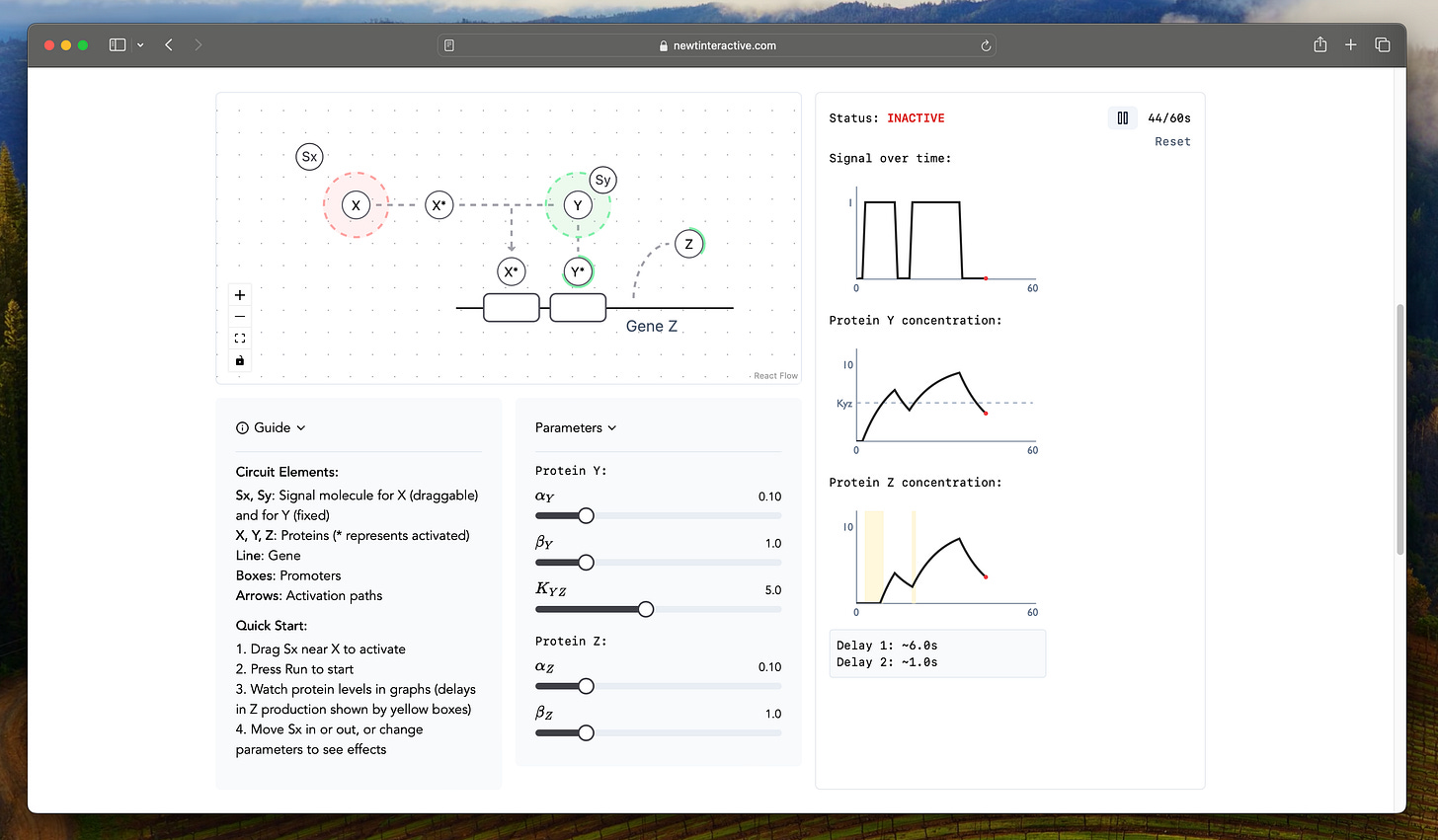
I hope to bridge this gap and make some of biology's intricate mechanisms comprehensible and awe-inspiring for everyone. I’ve started with an interactive series on systems biology (and wrote about my idea and motivation behind it in a previous post), as well as some standalone simulators for a few concepts: coherent type-1 feed forward loops and genetic circuit evolution, for two. My goal is to work my way up to more sophisticated simulations, tools, and interactive articles that will help illustrate, and importantly, allow you to play with, more advanced concepts. In addition, I’d like to generally write and draw more as well (also started with this by making my first science graphic and biological math model for Asimov Press).
Stories of science can elicit all kinds of emotions: joy, sadness, enchantment, heartbreak, optimism, valiance, apprehension, intrigue. I find, however, that one theme seems to be consistent among the characters: curiosity. This shouldn’t come as a surprise, of course, but what I hadn’t anticipated was how infectious it could be. Just reading about these scientists — their history, theories, efforts, mistakes and unwavering dedication to truth — kindled an active curiosity in me. I don’t think I have the patience to do what the scientists I read about did, experimenting day after day, week and week, year after year, exploring a small sliver in the “infinite vastness of biology”. And, since my curiosity started and ended with books, I didn’t think there was a meaningful role I could play. I couldn’t hear the calling.
But now I’m not so sure. I have this recurring desire to look down a microscope, and see a cell live its life, see its components swimming, squirming, dividing. I want to see a sequencing machine take in an organism’s DNA and spit out all its nucleotide bases; to hold a test-tube with genetic material that I edited with CRISPR-Cas9; to roam around a laboratory and peek at each bench’s weird collection of tools and equipment and liquids, slide my feet across the polished laboratory floor, smell the lingering scent of disinfectant; to go on more dives and hikes and explore the breathtaking diversity of life. It’s not quite a calling, more like hearing a faint ringtone in a distant room. You’re not sure if your phone’s ringing or your mind’s making the sound up. Maybe this time it’s worth taking a look.
This summarized version is missing a lot of the details that make is special (I couldn’t share the whole thing as that would be too long), but I highly recommend the chapter in The Gene, PBS’s documentary on her, and her LA Times essay.
Exactly how clumping leads to cellular dysfunction is still not completely evident either
Light hitting the eye passes through several ocular elements – cornea, lens, retina, optic nerve – before reaching the brain where it gets processed by the visual cortex. This process is not instantaneous; and if a motor function, like catching a fast ball or ducking a punch, is required, this full process would take more than 400 milliseconds. Human reaction times are faster though. This is because your brain runs a prediction of what’s going to happen based on what it’s seen before, not what it sees that instant. The action of catching a fast ball might be started when the ball leaves the thrower’s hand, the brain automatically calculating where to move the hand based on initial variables like position, speed, curve. Same for the punch, you might move before your visual system has registered that the fist is close.
I similarly feel this way about more recent breakthroughs and tools, like LLMs for biology and the release of gargantuan datasets of biological data (to work towards building a virtual cell). It sounds incredibly cool but it’s hard to separate hype from future impact without understanding, at least to some extent, the fundamentals.

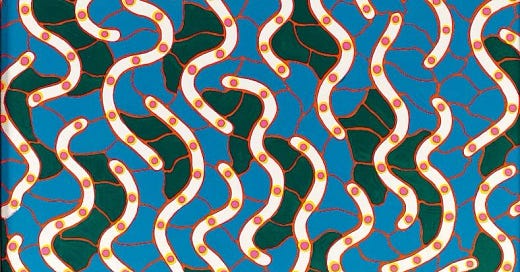



"And so, he writes, “in the end respiration and burning are equivalent; the slight delay in the middle is what we know as life.” Wait, what? The slight delay in the middle is what we know as life? I think when I first read that I might have skipped a heartbeat."
The exact same line in the book evoked the exact same reaction in me when I read it for the first time. I stopped reading and just stared at the horizon, wondering if this is what life is! Thank you for this post. I thoroughly enjoyed reading it. :)
finally someone who loves Mukherjee’s writing :)